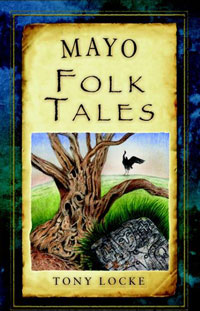Ellen Hanley. The Colleen Bawn, (1803-1819).
The remains of Ellen Hanley, a young girl of fifteen
were found at Kilrush, County Clare. It
was the autumn of 1819 and her body had been washed ashore, she had only been
married six weeks and her husband John Scanlan was the prime suspect. Ellen was known to have been an outstanding
beauty, she was intelligent and friendly. Her mother had died when Ellen was
only six years old and she was reared by her uncle, John Connery.
John Scanlan was only in his twenties when he met
Ellen and he quickly proposed marriage to her.
He was well connected and belonged to a higher social class than Ellen.
This difference worried Ellen and she first refused his offer of marriage. However, Scanlan convinced her that
everything would be alright and after calming her fears the marriage was
arranged. Ellen eloped in July, 1819 and
it has been suggested that they were married either in Limerick or in the Old
Church at Kilrush.
The novelty of marriage to a low born girl was soon
to wear off for Scanlan. He became tired of his young bride and with the aid of
his servant, Stephen Sullivan; he began to plan her murder. Sullivan took Ellen for a trip on the river
using Scanlan’s boat, he was armed with a gun and he was meant to shoot her and
throw her body overboard, however, he lost his nerve and returned to shore. Scanlan was furious, he plied Sullivan with
whiskey and then somehow he convinced Ellen to resume their boat trip. This time Sullivan murdered her with a
musket, removed her garments and ring, hiding them in the boat. He tied a rock to her body and dumped her
remains into the cold dark waters of the Shannon. Six weeks later her body was washed ashore at
Moneypoint, Kilrush on the 6th September 1819. The crime was to
raise outrage and horror across all classes.
Scanlan and Sullivan went on the run but even in the
early 19th century the powers
of the law had a long reach and Scanlan was the first to be caught. He was
charged with the murder of Ellen Hanley and brought to trial in March
1820. Due to his high social position
Scanlan expected to be acquitted for the murder, after all Ellen Hanley was
nothing more than a low born commoner. His trial took place and created a
sensation in 19th century Ireland, Scanlan’s family hired Daniel
O’Connell (the Liberator) to act for him as defence barrister and Scanlan sat
back and waited for the verdict of innocent to be declared. He was mistaken,
found guilty he was sentenced to death. On the 16th March 1820 he
was transported to Gallows Green, County Clare, and the place of execution
where he was duly hanged.
Stephen Sullivan was captured soon afterwards and he
was tried four months after Scanlan. His
trial took place in Limerick and caused just as much of a sensation as
Scanlan’s. He was found guilty of murder
and sentenced to death by hanging, just before the rope went around his neck he
confessed his guilt and admitted that it was his employer (Scanlan) who
instigated the murder.
Ellen Hanley is buried in Burrane cemetery near
Kilrush. A Celtic cross was erected bearing the following inscription:
"Here
lies the Colleen Bawn,
Murdered on the Shannon,
July 14th 1819. R.I.P."
Murdered on the Shannon,
July 14th 1819. R.I.P."
Unfortunately souvenir hunters have chipped off so
much over the years there is now no longer any trace of the cross. So ends the
tragic story of the Colleen Bawn (the Fair Girl. If ever you get off the ferry
in Killimer pay a visit to her memorial.


